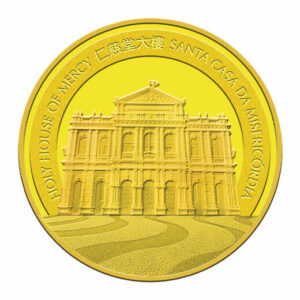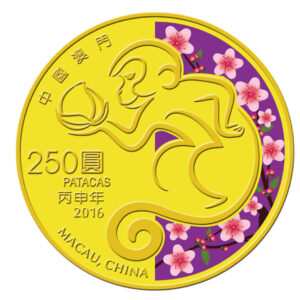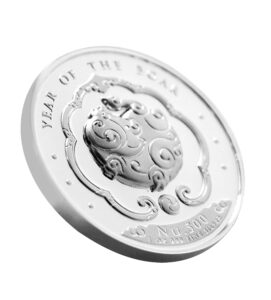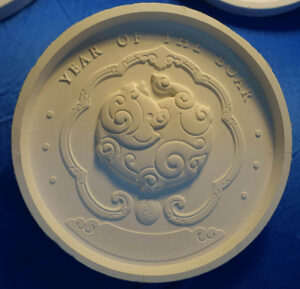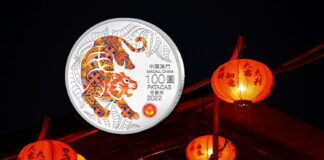It’s March 26, 2019, about 10 in the morning. I find myself standing inside the opulently furnished shop of The Singapore Mint. At 20 Teban Gardens Crescent, Singapore 608928 you will find not only the mint, but also the biggest of four stores, where The Singapore Mint sells its own products. And not only its own products. Collectors can also purchase coins from other mints here.

While others might be hesitant to place their products next to their competitors’, The Singapore Mint banks on whatever benefits the coin market. It cannot rely on a century-old network of coin collectors, coin dealers and coin cabinets as is the case in many other countries in the world. Rather, its Mint Director Yip Pak Ling (the last name is stated first, by the way, as is the norm in Singapore) is the one who has to set things in motion in order to turn Singaporeans, who are both eager to buy and financially strong, into coin collectors – remember, Singapore is one of the richest countries in the world with the highest density of millionaires after all.
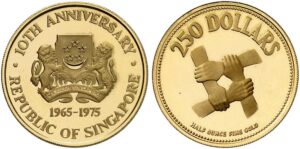
But let’s start in the beginning. In 2018, The Singapore Mint celebrated its 50th anniversary, as it is very closely connected to the small nation’s independence. August 9, 1965 is officially celebrated as the day when Singapore became an independent state. Back then, citizens still used the same currency that had also been in circulation in Malaya and British Borneo since 1953. One of the young state’s priorities was thus to create its own currency, even though said first currency was compatible with the coins of Brunei and Malaysia, and the three of them constituted a monetary union.
With the passing of the 1967 Currency Act, the Board of Commissioners of Currency of Singapore was established. The Board of Commissioners of Currency of Singapore was later merged with the Monetary Authority of Singapore (MAS) which took over the responsibility of all currency issuance.
In 1968 already, the Minister of Finance decided to establish a national mint. He founded The Singapore Mint in the same year.
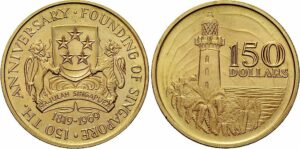
Thus, it was The Singapore Mint which struck Singapore’s first commemorative coin in celebration of the 150th anniversary of the Founding of the City of Singapore.

While The Singapore Mint was first run as part of Chartered Industries of Singapore, it was turned into a private corporation in the 1980s, whose shares are fully held by state-owned companies.
Au contraire: The Singapore Mint is proud of creating products which serve as a symbol of what the country represents and carry it out into the world. One fitting example is the orchid, which plays a very special role in Singapore’s culture. And one of the city’s most popular sights is the National Orchid Garden with its 1000 species and 2000 hybrids on display covering the entire color-range of a rainbow. Orchids have been bred here since 1859 – a fact that UNESCO honored by adding it to the World Heritage Site list.
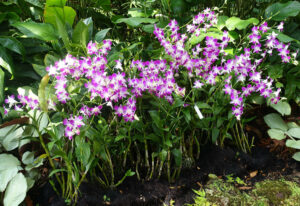
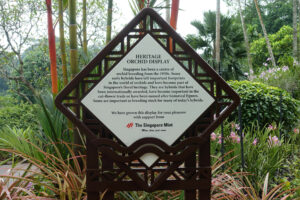
The Singapore Mint has dedicated numerous products to this facet of the country. The “Native Orchids of Singapore” series began in 2006. It features endemic orchid species. Every visitor of the National Orchid Garden can see that The Singapore Mint assumes an obligation to this World Heritage. They can find a sign there stating that The Singapore Mint provided funds to finance a part of the garden.
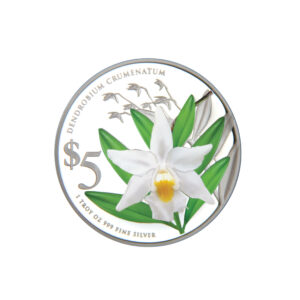
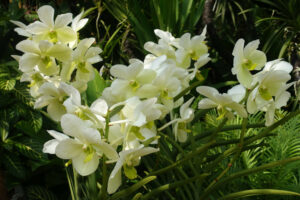
The National Orchid Garden is a must-see in general, even for numismatists. You won’t realize how diverse those fantastic flowers really are until you look for nature’s models for the coin images.
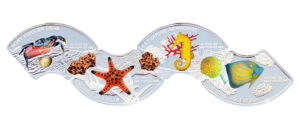
Let’s return to some facts. The Singapore Mint has become a global player in the past years. It cooperates with more than 20 countries, among them many of the ASEAN nations, i.e. nations that are part of the Association of South East Asian Nations. But more exotic destinations, too, such as Bhutan, Cambodia, Macau and Nepal are their clients – and let’s not forget about several Direct-Marketing-Associations in Germany and other European countries, who make use of the knowhow from Singapore to have numismatic products created for their customers.
At The Singapore Mint, every single coin is still created by using a plaster model. Which doesn’t mean that the talented designers therefore refrain from using state-of-the-art technology. Quite the contrary.
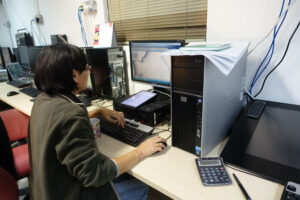
At first, the two-dimensionally drawn draft is turned into a three-dimensional draft by using the same software usually used in the trade.
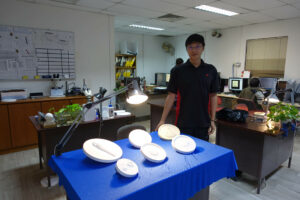
In a next step, the basic line work of the key design elements on the plaster model is created by using a milling machine on the basis of computer-generated data. The finer details of the coin designs are then meticulously engraved by hand onto the plaster mould by The Singapore Mint’s master engravers. The Singapore Mint prides their workmanship and craft, and engraving is a key process that involves the human touch, crucial to ensuring the essence of the design elements are well encapsulated. From the engraved moulds, the master die and working dies are then created. This process adds a human touch to the manufacturing process which makes these depictions so charming.
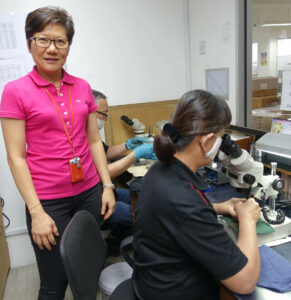
Other manufacturing processes, too, which are done by machines at the largest mints, are deliberately done by hand at The Singapore Mint as part of their emphasis on craftsmanship. Dies are still polished manually by mint employees, which have been working at the mint for decades.

The Singapore Mint banks on a mix of manual work and state-of-the-art high-performance technology. This is the other side of the coin when it comes to the perfect mastery of the craft, after all. One mint employee, who guided us through the technological department, told us that everyone gets a little nervous whenever the “Boss”, Mint Director Yip Pak Ling, has a vision. When this happens, he will not rest until the engineers have turned it into a real product. This endeavor is often accompanied by many attempts of the trial-and-error kind.
Hence, a number of technologies have been developed at The Singapore Mint that no other mint uses. Which is why some parts of the manufacturing site are “off limits” for pictures. One of those is a printer, which was developed by The Singapore Mint, that creates the unique enamel-style printing application.
The Puzzle Coin, three of which have already been issued, is a great example for those amazing products that can be developed by means of precise craftsmanship and ideas. It is made up of twelve individual puzzle shape coins and one centre piece. The twelve coins form the Chinese lunar zodiacs with the corresponding years, and the centre-piece holds all 12 pieces together in a three way interlocking puzzle set. To strike the puzzle-shaped blanks so accurately that you can actually assemble them to make up one single coin later truly is an art!
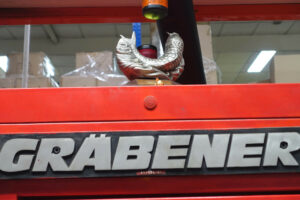
The Singapore Mint is able to apply the following technologies: unique coin shapes, special color effects, dynamic hologram effects, selective gold-plating, latent imaging effects, gem embedding, special UV a ray effects, antique finish and ultra-high relief.
The Singapore Mint has received multiple awards for all of the above, for example an award at the Mint Directors Conference 2012 for a coin featuring elaborate latent technology.

The manufacturing of commemorative and circulation coins is only one of the numerous jobs done at The Singapore Mint. It is also the coin logistics center – i.e. the inspection, repackaging and recycling of circulation coins. Mints from all over the world can make use of its consulting services. Here, medal programs and distribution channels are created. Last, but not least, The Singapore Mint also has its own money museum, which unfortunately remains closed at the moment.
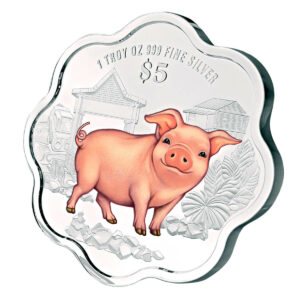
After my tour through the production site, it had gotten quite late. I saw a lot, heard a lot, learned a lot, and slowly, but surely, I understand the important role The Singapore Mint plays here in Asia.
“Our commitment to innovation and quality continues to drive us as we advance on our journey for the future,” mint director Yip Pak Ling said about The Singapore Mint at the end of the tour.
And indeed, The Singapore Mint is well equipped to respond quickly and easily to the demands of the global market.
This link will take you to The Singapore Mint website.
You can order their products online.
We visited The Singapore Mint in the context of attending the Singapore International Coin Fair.
We have presented an abundance of new issues of The Singapore Mint in the past.
I’ll admit, my personal favorite is the commemorative coin issued in celebration of Bruce Lee’s 75th birthday.
The Singapore Mint of course also has a Facebook profile. 12,527 people already follow their updates.
The Singapore Mint stores can be found in several popular shopping malls around the city. To find them use this shop locator.
Here, you can learn more about the Heritage Orchid Garden, sponsored by The Singapore Mint.
And here’s some nice trivia: This website about the enchanting Singapore Zoo gives an entirely new meaning to the expression “Animals on Coins”…









